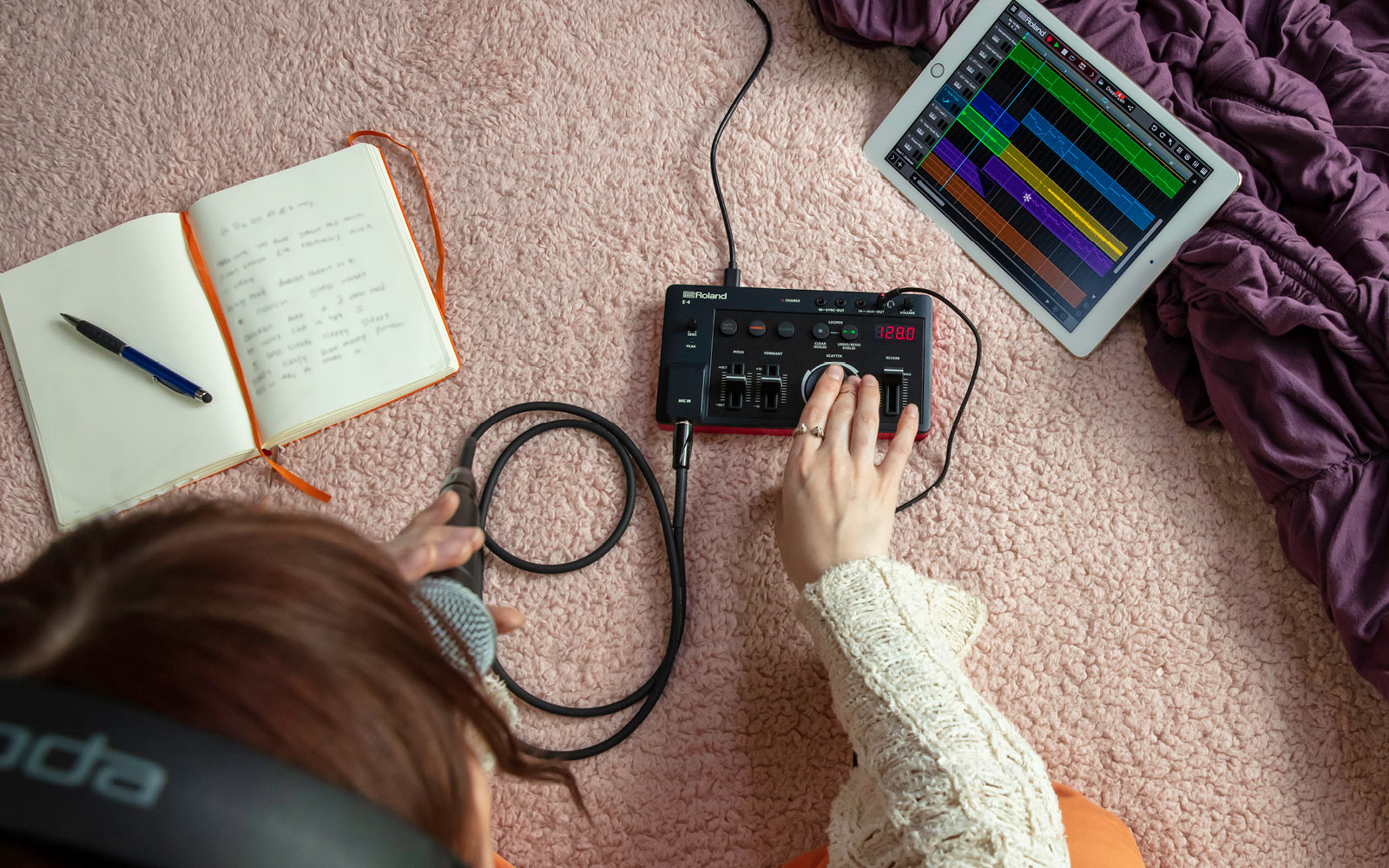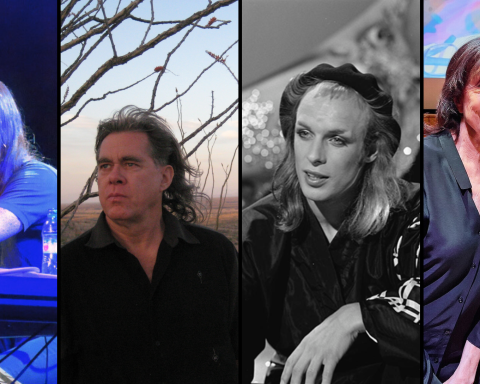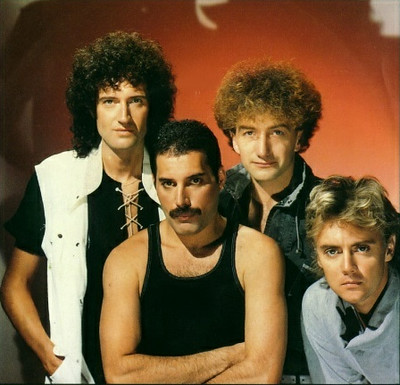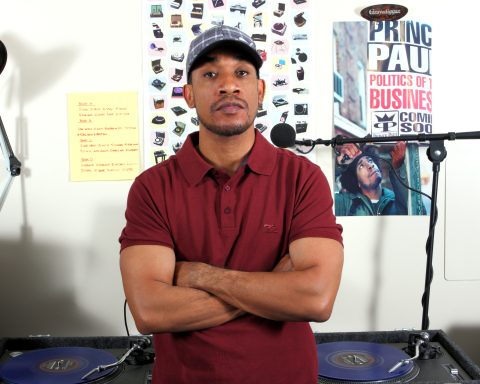Since the ’30s, engineers have been harnessing technology to develop revolutionary devices that synthesize and alter the human voice. Today, artists can harmonize their vocals without relying on background singers, and music producers who don’t necessarily excel at singing can feel more comfortable performing with vocoders and other voice-masking tools. In short, artificial harmonies and robotic sounds are ubiquitous in modern music. Although they share similarities, there are differences between the inner workings and sonic output of each type of vocal effects processor. In this article, we’ll explore them all and guide you on your vocal harmonization journey.
Synthesizing the Human Voice
The Voice Encoder
When Bell Labs engineer Homer Dudley invented speech synthesis in the 1930s, music was likely far down his list of use cases. With World War II looming, a secure line of communication meant the difference between life and death. In fact, Dudley’s invention later became an integral part of SIGSALY, a critical voice encryption system on which the US Military depended.
Around that time, Dudley was working on two projects simultaneously: Vocoder, a term derived from a combination of the words “voice” and “encoder,” and Voder, an abbreviation of Voice Operation Demonstrator. Voder required a large collection of equipment that was difficult to operate, yielding partially decipherable words at best. Even at its inception, the vocoder performed better in comparison. As a result, Voder fell into obscurity while its cousin took over the world.
"Electronic music pioneers Kraftwerk broke into the mainstream with their vocoder-infused hit single, 'The Robots.'"
The Vocoder Movement
In the following decades, the leading manufacturers in sound synthesis would plant the seeds of vocoding in music. Soon, electronic music pioneers Kraftwerk broke into the mainstream with their vocoder-infused hit single, “The Robots.” A few years later, Fab Five Freddy released “Change the Beat,” which contained one of the most sampled sound bites, created with Roland’s SVC-350.
By the 1980s, vocoders like the SVC-350 were featured in futuristic scores of various television series and films. One of the most iconic synthesized soundtracks in history, Ron Grainer’s theme for Doctor Who, even got a vocoder remix by Peter Howell.
Around that time, the playable variation of the rack-mount SVC-350, the VP-330, was growing in popularity. The device was compact and versatile, making it an attractive option for touring musicians.
"The playable variation of the rack-mount SVC-350, the VP-330, was growing in popularity. It was compact and versatile, making it an attractive option for
touring musicians."
The VP-330 Vocoder Plus wasn’t merely a paraphonic vocoder; it was also a string machine. The instrument was a must-have instrument for many producers and visual media composers, including Vangelis, who scored Blade Runner with it. Years later, Roland updated the Vocoder Plus, and the VP-03 was born. Even more portable than its predecessor, the VP-03 combined the signature sound of the VP-330 with step sequencer and chord memory functions.
Still, there’s an allure to embarking on a vintage gear quest. Roland moved on to manufacturing many other legendary synths and vocal processors. However, the VP-330 continued to turn heads in the industry. Stephen Kozmeniuk, the producer of Dua Lipa’s hit single “Levitating,” looked for a VP-330 for several years before finally finding one in Tokyo. The first chords he played on his VP-330 became the origin of the diamond-certified song.
"Stephen Kozmeniuk, the producer of Dua Lipa’s hit single 'Levitating,' looked for a VP-330 for several years before finally finding one in Tokyo."
Rise of the Talk Box
In the ’70s, another synthetic vocal sound became a staple in funk, rock, and electronic music. In contrast to the rich polyphony of vocoders, talk boxes were best at producing monophonic sounds reminiscent of the electric guitar. It’s hard to pinpoint the earliest appearance of the talk box. The technology behind the device was simple enough that anyone could make one at home. Classic rock mainstays like “Sweet Emotion” by Aerosmith and Peter Frampton’s “Show Me the Way” exemplified the popularity of the talk box during the decade.
Unlike vocoders, modern talk boxes do not reproduce the sound electronically. All you have to do is let the output of your electric guitar or synthesizer resonate in your mouth.
It sounds simple enough, but it takes practice to get it right. Performing with a plastic tube in your mouth may feel strange at first. You’ll need to continuously change the shape of your mouth to create vowel-like textures with your instrument. Luckily, there are FX pedals like the BOSS VO-1, which eliminates the need for plastic tubes thanks to its handy talk box emulation.
Even after their novelty wore off, vocoders and talk boxes continued to make periodic comebacks over the years. Artists like Daft Punk and Bruno Mars propelled humanoid sounds into the new millennium.
"Classic rock mainstays like 'Sweet Emotion' by Aerosmith and Peter Frampton's 'Show Me the Way' exemplified the popularity of the talk box."
Harmonizer Heyday
The Technology Behind Vocal Harmonizers
The first vocal harmonizers entered the market around the same time as commercial vocoders and talk boxes. Early harmonizers came with latency issues, making them impractical for use on stage. Their formula was based on creating a copy of the audio signal and transposing its pitch accurately. Now, not only do harmonizers work fast, but they are also easily accessible. They come packed with multi-layering functions and additional FX to improve your live vocal mix.
The only way to operate a vocoder live is to play and sing with it. Even the most advanced talk box requires exaggerated vowel-shaping to work well. Vocal harmonizers, on the other hand, make it easy to add and subtract layers on the fly. You can trigger them with a MIDI controller or choose a key and scale instead.
Auto-key vs. MIDI Control
One reason people confuse vocal harmonizers with vocoders is that both can be triggered with a keyboard. Take Roland’s VT-4 Voice Transformer, for example. A multi-FX processor with harmonizing, vocoding, and tuning features, the VT-4 can be controlled via MIDI in real time. The workflow feels exactly like performing with an analog vocoder, but the resulting sound is more natural and fluid in comparison.
Running vocal harmonizers like the VT-4 or E-4 in auto-key mode can also be a liberating option. Say your song is in E minor, and you want a single background vocal layer harmonizing with the lead melody. All you have to do is select the key and interval on your processor, and you’re good to go.
"Running vocal harmonizers like the VT-4 or E-4 in auto-key mode can be a
liberating option."
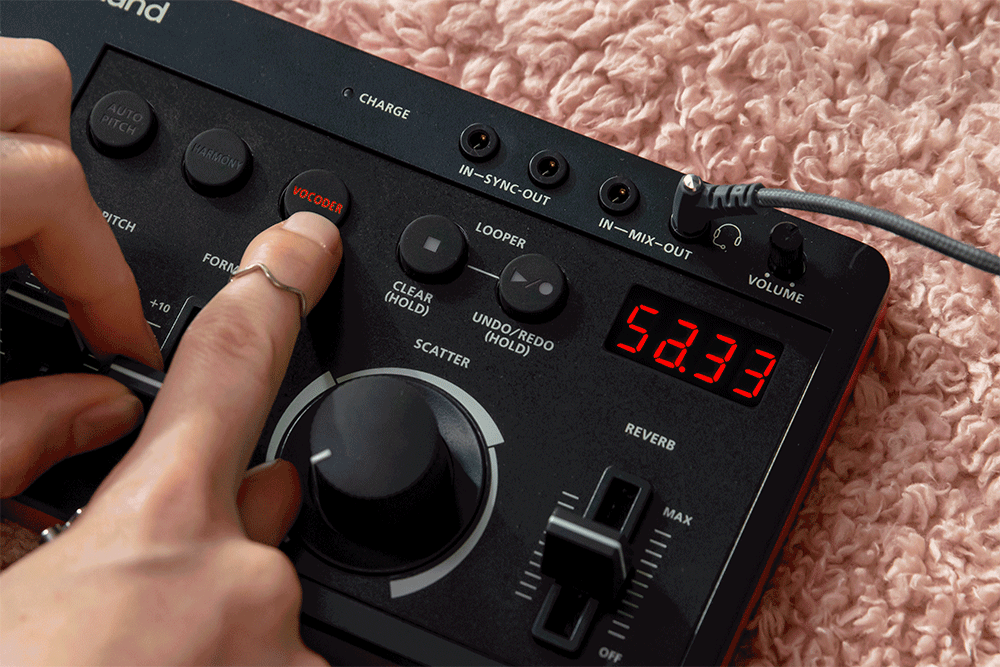
There are upsides and downsides to each harmonizing strategy. If you want to perform skillfully with a vocoder, you’ll need to sharpen your piano-playing skills. Likewise, vocal harmonizers require singing on pitch and projecting with confidence.
Whispery vocals may evoke the right emotion for your song, but a harmonizer can only do its job well if you deliver a clean and stable tone. Too much vocal fry and you’ll start hearing unpleasantly distorted sounds.
Shifting Pitch and Formant
Singing live through a harmonizer may not come naturally. Your ears will want to pay attention to the background layers, making it harder to stay on pitch. This is why most vocal processors, like the E-4, offer auto-pitch controls ranging from subtle to hard-tuned.
"Whispery vocals may evoke the right emotion for your song, but a harmonizer can only do its job well if you deliver a clean and stable tone."
If you’ve ever recorded at a studio, you may have noticed that creating a large vocal group out of one singer’s voice is difficult. But what if you could alter the acoustics of that singer’s vocal tract for each harmony layer? Would you be able to achieve a bigger sound then? The answer is yes; that’s how vocal processors generate life-like harmonies.
Lowering the formant will make you sound like a person with a deep voice. The pitch will be the same, but you won’t sound like yourself anymore. By raising the formant, you can take your timbre all the way to what we can only describe as a mosquito buzz.
In extreme applications, formant shifting can sound humorous. Used in moderation, it can help you imitate the impact of multiple background vocalists singing alongside you. Once you get the hang of it, try to be strategic with your pitch and formant shifting. For instance, if you’re a soprano, adding a layer an octave below the original pitch can fatten your sound. If you lower the formant as well, all the better.
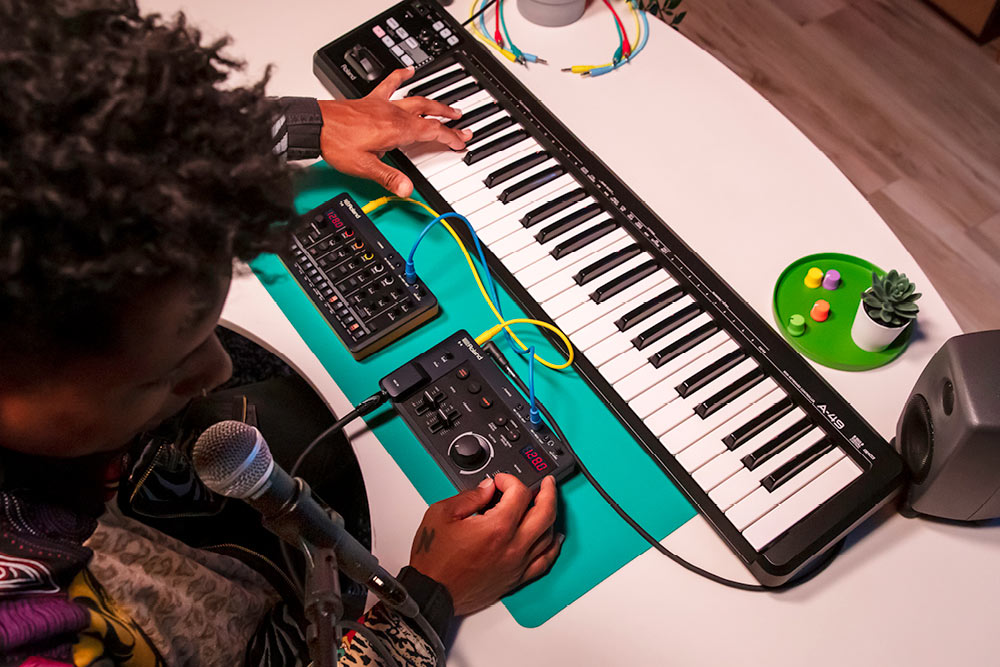
"Once you get the hang of it, try to be strategic with your pitch and
formant shifting."
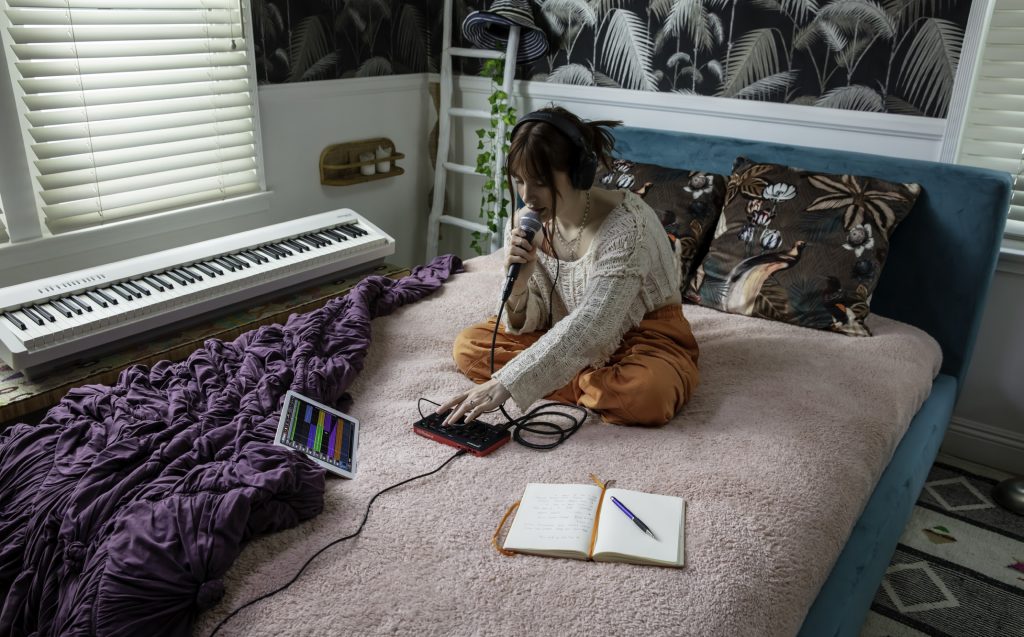
Exploring Vocal Production Technology
Hardware or Digital?
Nowadays, most producers create artificial harmony layers after recording sessions. That way, the vocalist can focus on their performance while the producer pitch-shifts edited takes without distractions. Most DAWs come with stock vocoder plugins that are quite user-friendly. So, why invest in hardware equipment to harmonize your vocals?
Both methods have their uses, yet there’s no denying that sitting in front of a computer can get dull after a while. In that stationary setting, you may start overthinking and eventually stop creating. Besides, if you plan on performing with vocal effects live, practicing while in the studio is practical and beneficial.
"If you plan on performing with vocal effects live, practicing while in the studio is practical and beneficial."
Choosing a Vocal Processing Instrument
As complex as they may seem initially, multi-effects processors and vocoders are a godsend for creative vocalists. Today, both of these features are built into several popular Roland synthesizers and keyboards from which to choose. With GO:KEYS 5, you can create real-time harmonies that follow your sequenced chords with the push of a button. You can use any synth in the JUNO-D series to engage both auto-pitch and vocoder functions while performing. And with the Vocal Designer Model Expansion for JUPITER-X, you can create a full band out of your vocal harmonies.
As with everything else in music, the key is to begin with an instrument that inspires you to play. Once you settle on that primary element, harmony, and effects will follow naturally, and the rest will fall into place before you know it.
